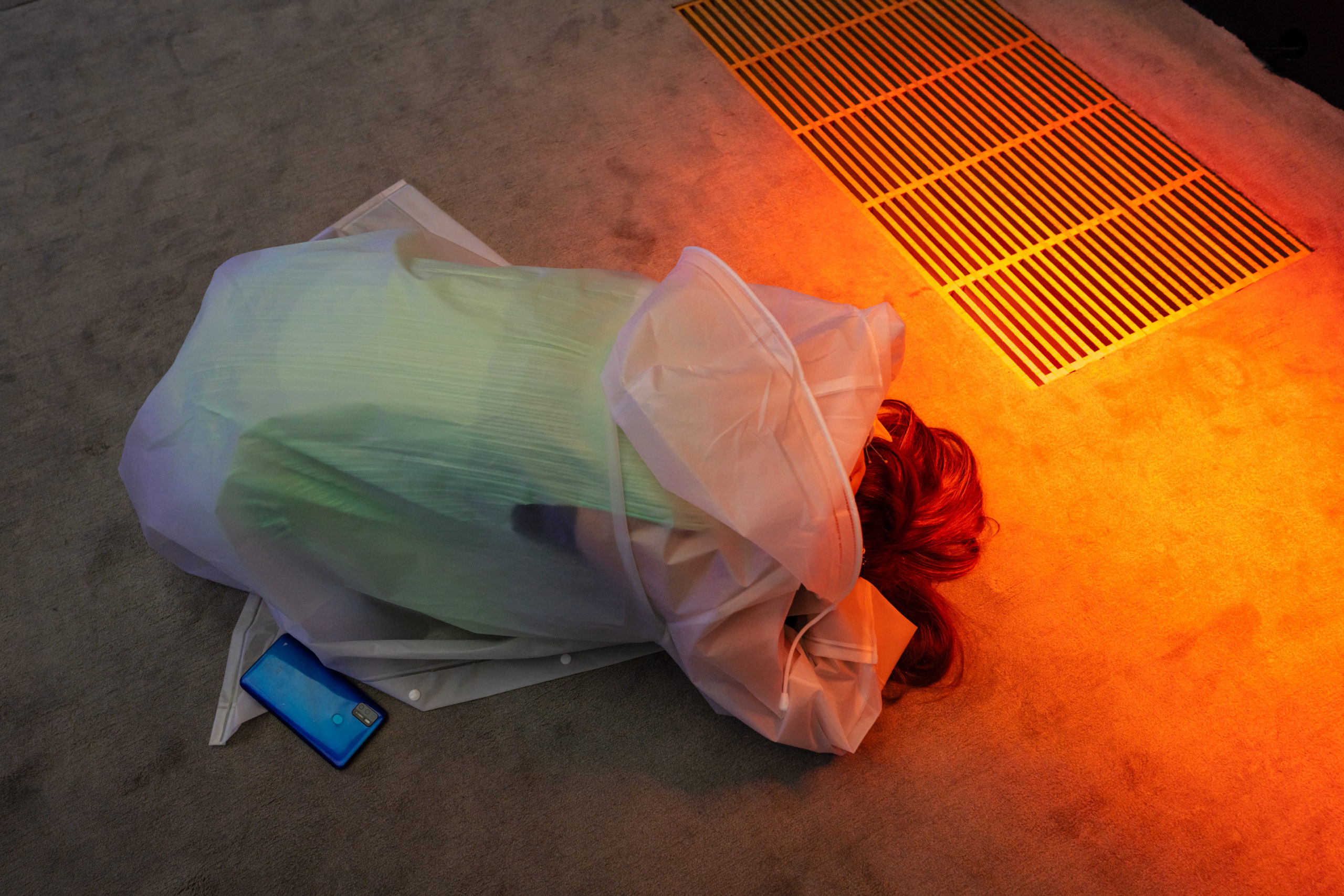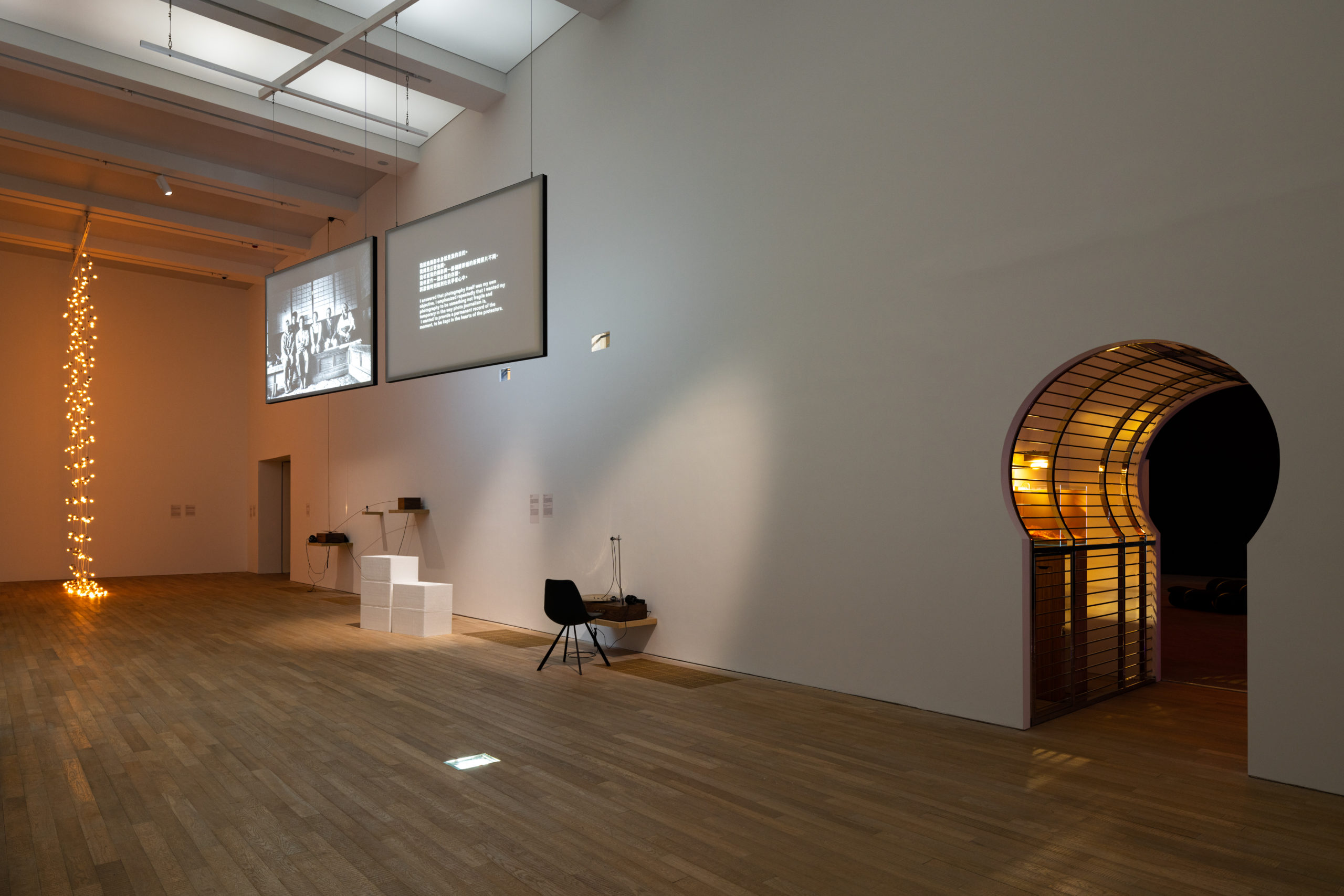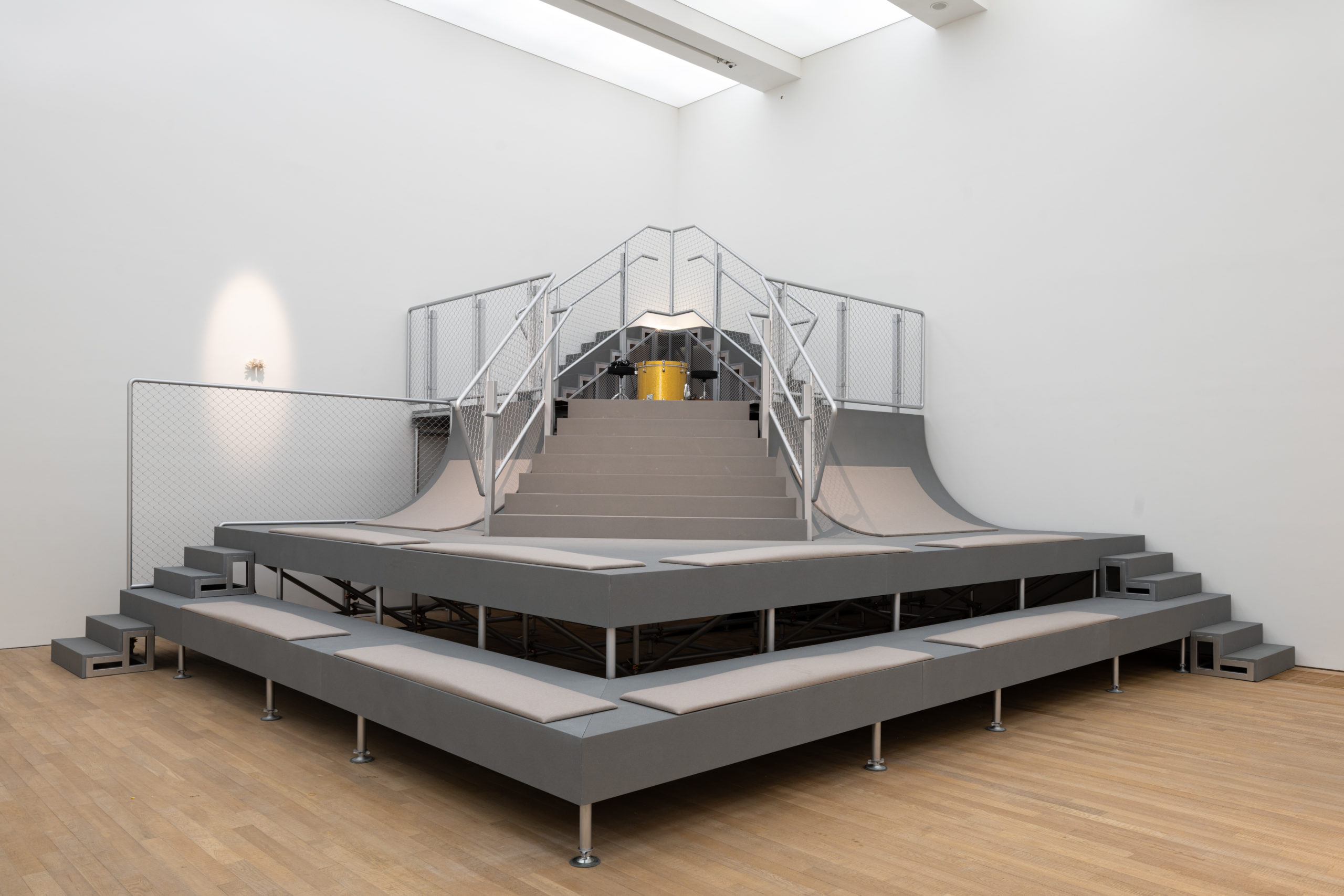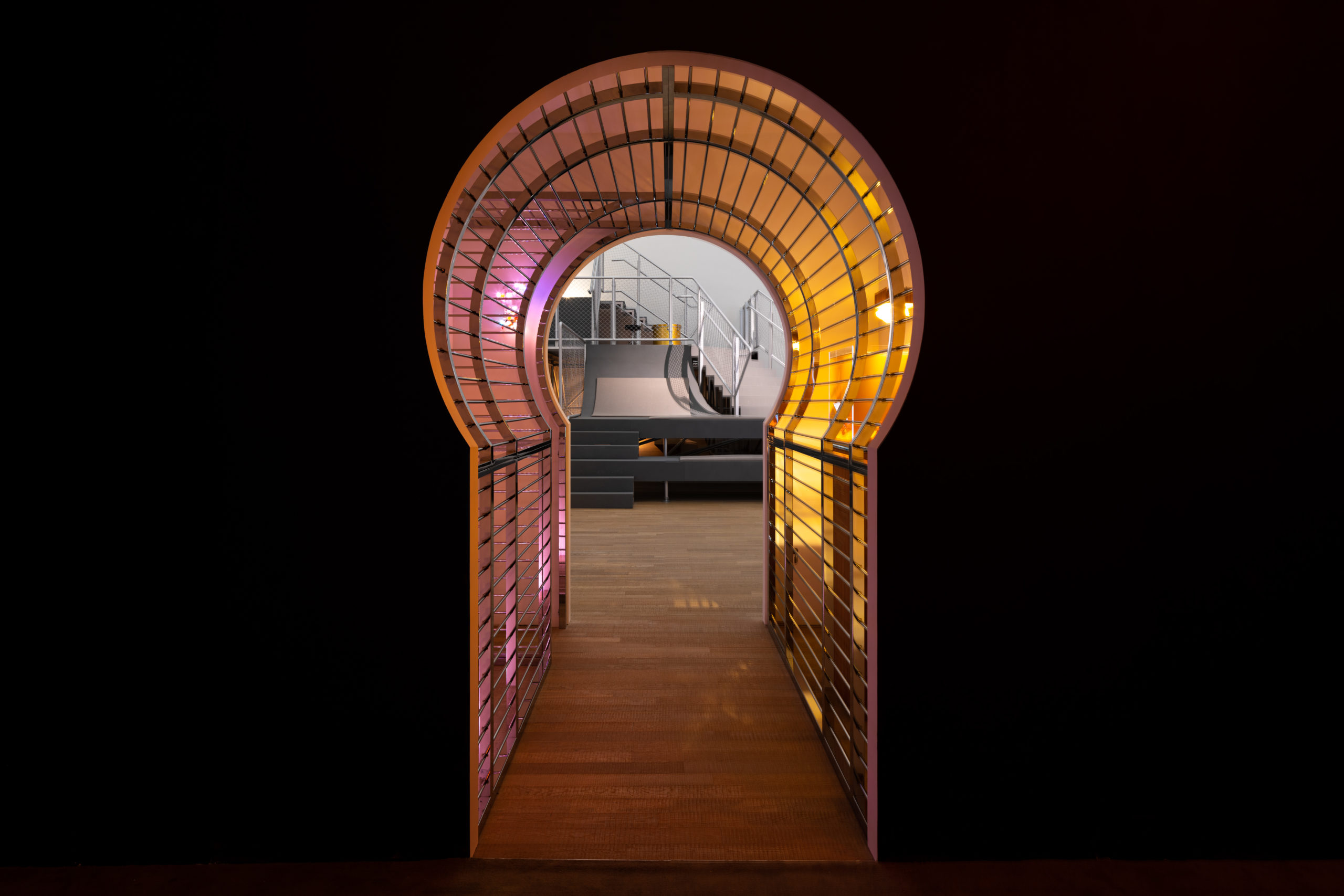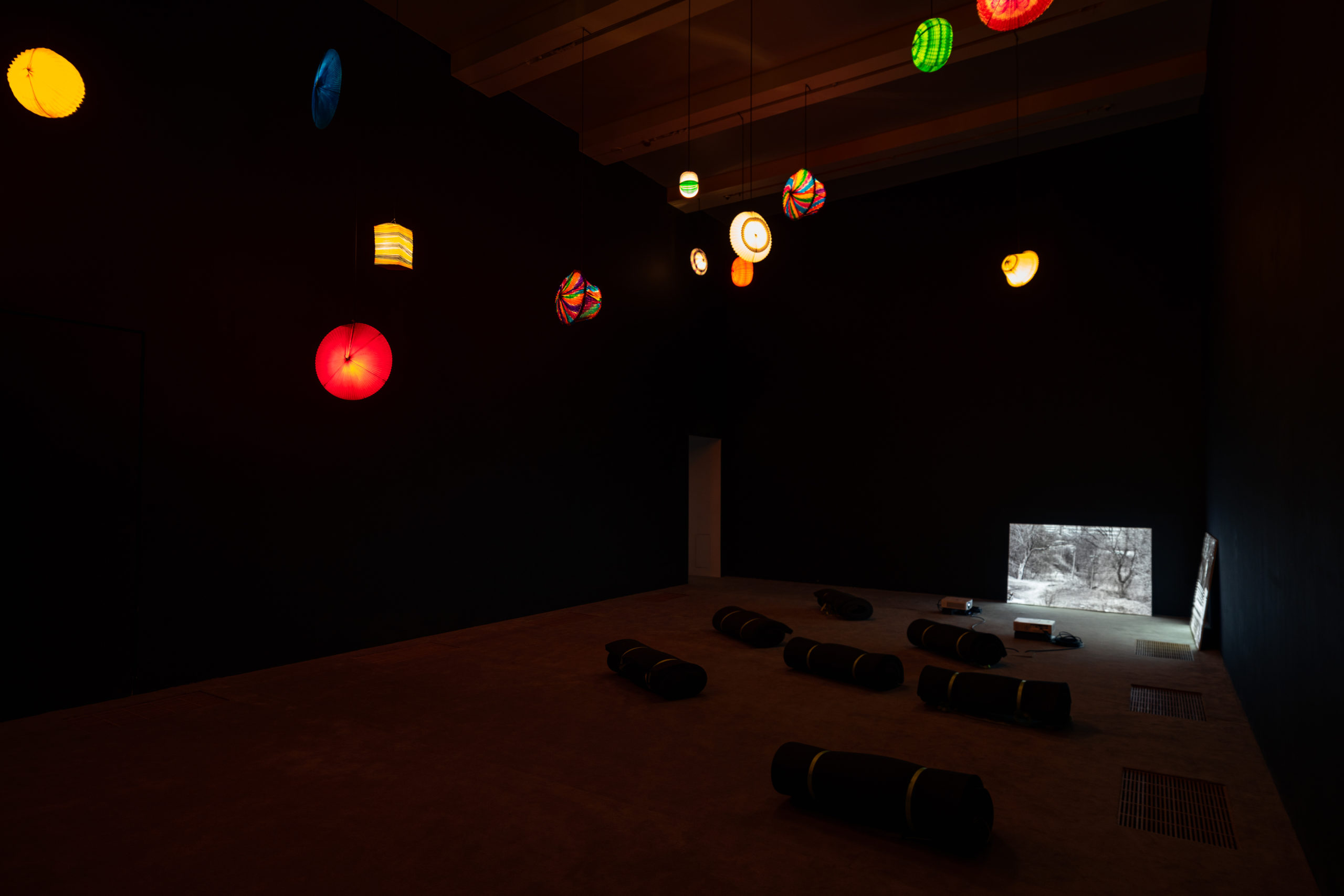Lean Into Trust & Confusion at Tai Kwun
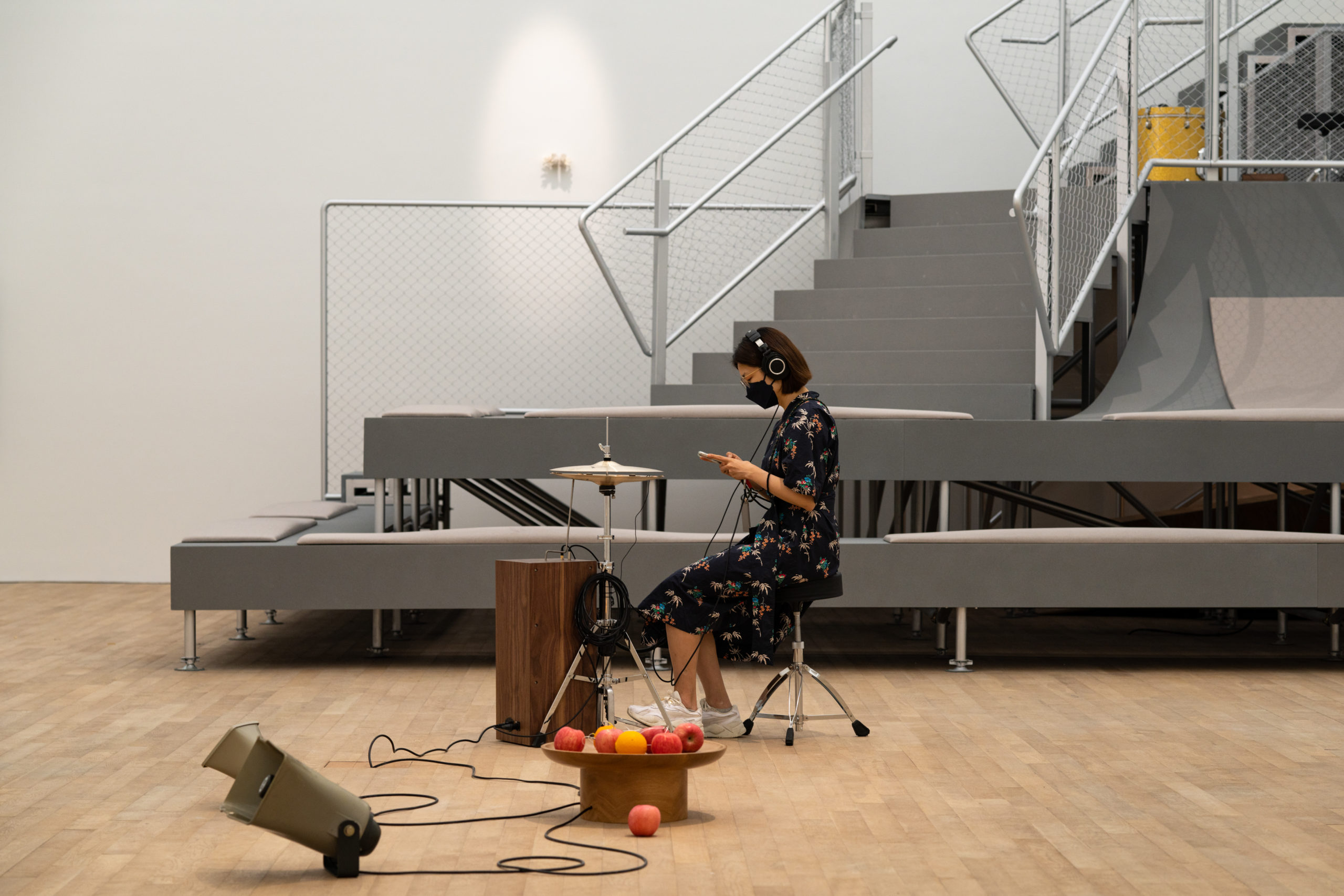
Yuko Mohri, Decomposition, installation view, 2021 [photo: Kwan Sheung Chi; courtesy of Tai Kwun Contemporary]
Share:
Trust & Confusion at Tai Kwun Contemporary in Hong Kong was a collective effort to bring people together through performativity, interaction, and participation. An expansive show, it encompassed 28 works, including site-specific, immersive, and sensory ones, as well as performance art, by more than 20 artists and 200 performers, interpreters, and dancers from Hong Kong, Beirut, Berlin, Paris, New York, Tokyo, and elsewhere.
Curators Xue Tan and Raimundas Malašauskas conceived of the exhibition as a series of themed performative episodes in physical space—divided into the Day Room, a bright, open-plan, white-cube gallery where the show’s many installations were built; and the Night Room, a windowless, gray space focused on solo performance art. Connecting the two locations was an intentional, keyhole-shaped path, dubbed the Sunset Room, which staged a blend of installation and performative gestures.
Nile Koetting, Remain Calm, Performative Installation, 2021 [courtesy of the artist, and Tai Kwun Contemporary]
Throughout the exhibition period, performances unfolded during five distinct “episodes” that were timed to coincide after each full moon, a curatorial tool to align ideas of renewal and rebirth with the natural world.
A newly commissioned sound installation by Pan Danjing, One Hundred Nine Minus (2021) was staged in the spiral stairwell that led from the public entrance of the gallery to the third-floor exhibition. Two stentorian voices flatly hummed to each other, their vocals warped by a Revox tape machine as much as by the stone-walled architecture of the stairwell. The sound intensified the farther up the stairs you walked; it was the exhibition’s first nod to participation, which found its visual harmony in Liliana Porter’s Untitled (triangle) (1973), a photograph located at the entrance to the exhibition. The wall-sized image shows three intertwined hands held together to create single triangle drawn on their overlapping palms, an intimate weaving—from voice to hands, confusion to trust—that finds resonance in the humming of One Hundred Nine Minus.
Of course, the implications of human touch have taken on different meanings amid the pandemic; beyond fear and desire in proximity is the re-imagination of relationships created through distance and digital exchange. Humans always find a way of creating connections, even in the smallest of details, such that the vibrations of a mechanical voice can feel like an embrace.
trust & confusion, installation view, 2021 [photo: Kwan Sheung Chi; courtesy of Tai Kwun Contemporary]
The first work installed in the Day Room was Felix Gonzalez-Torres’ Untitled (North) (1993), an installation of lightbulbs attached to a row of twelve strings that fall from the ceiling to resemble a waterfall of lights. Created during the height of the AIDS pandemic, the work, with a warm hue reminiscent of candlelight, feels like an intimate and private space for remembrance and mourning that reflected what Gonzalez-Torres experienced at the time. As the bulbs gradually burnt out or randomly combusted throughout the exhibition period, they seemed to represent lives lost. Yet, in this space where fragility and grief collided, the artist made space for expanded meanings, instructing curators to replace any failed bulbs during the show, and thus anchored its meaning both in the past, when it was made, and in the present, where it now exists.
A sense of liminality expands in Celeste Burlina’s The Liminoid (2021), whose three-tiered metal grid structure takes inspiration from boardrooms, public squares, and skate parks through curved wall frames, steps, and symmetrical seating platforms. Positioned in the corner of the Day Room, this amphitheater-like installation served as a stage. Through the use of architecture as a tool to change the meaning of its surroundings, viewers became both objects within the gallery and observers with agency over how they viewed the space, depending upon how they interacted with its design.
Celeste Burlina, The Liminoid, installation view, 2021 [photo: Kwan Sheung Chi; courtesy of Tai Kwun Contemporary]
That activation, in which neither viewer nor object was conceived as passive, extended from The Liminoid to the Sunset Room, the hallway connecting the Day Room with the black box performance setting of the Night Room. Trevor Yeung’s Learning to be a tree lover (Protection) (2021), a steel cage that forced viewers to move in only one direction, held court in this narrow space. The arching metal frame replicated cages used to protect the incense tree Aquilaria sinensis, a species native to Hong Kong—a metaphor, it seemed, for a city whose harsh border restrictions, as a result of Covid-19, have intersected with implementation of the National Security Law in 2020 and constricted freedoms in the territory.
Amplifying such heightened and contradictory states of security and safety was Still in Hong Kong (May 1–August 31, 2021), a performance by Scarlet Yu and Xavier Le Roy that would begin abruptly as a performer ran to audiences in the Sunset passageway and delivered such statements as, “I am not sure how long I can stay here and be okay with the changes, but I am still in Hong Kong.” The performance would continue in the Night Room, with fast-paced lines delivered alongside dramatic poses that drew on memories of the political protests which struck the former colony in 2019. The performer would crouch to the floor, eyes and mouth wide open, acting as if they were about to be attacked. After years of unrest, many in the city have been left confused and uncertain about their future. Still in Hong Kong invited spectators to recognize, empathize with, or indeed become invested in residents’ struggle.
Trevor Yeung, Learning to be a tree lover (Protection), installation view, 2021 [photo: Kwan Sheung Chi; courtesy of Tai Kwun Contemporary]
Claudia Fernández, Constellation, installation view, 2015 [photo: Kwan Sheung Chi; courtesy of Tai Kwun Contemporary]
Floating above the performers was Claudia Fernández’s Constellation (2015) (exhibited May 1–September 1, 2021), a collection of 50 paper lanterns that the artist has amassed throughout her life. Each item, having passed through many hands and generations dating back to the 1950s, represents the playful celebrations, festivals, and streets often associated with Lunar New Year in the East and luminarias in Mexico. They come in many different shapes and designs: balloons, accordions, stars, and globes, as well as wish and paper sky lanterns. Perhaps there was a connection between Gonzalez-Torres’ quiet and solemn space for mourning in the Day Room and this transgeographical memorial to local culture, which in Hong Kong is slowly disappearing as the Mainland Chinese government continues to exert its will over the city. Layers of hope hide in these colorful lights; just as lightbulbs can be changed, so culture can be cared for and renewed.
Sarah Wei is a writer, based in Hong Kong, covering the travel, arts, culture, and nonprofit sectors. She holds a Bachelor of Economics degree and a Bachelor of Finance degree from the University of Adelaide. She has written and spoken for luxury publications, government bodies, multinational conglomerates, and development groups including VICE, LUXE City Guides, Ocula magazine, Asia Society, Art Central, The Sovereign Art Foundation, Manulife, Swire Hotels, Salvatore Ferragamo, The Peninsula Hotels, and the Hong Kong Tourism Board. As the co-founder of Paradigm Haus (paradigmhaus.com), a print magazine and creative agency, she is always open to new ideas from around the world.
